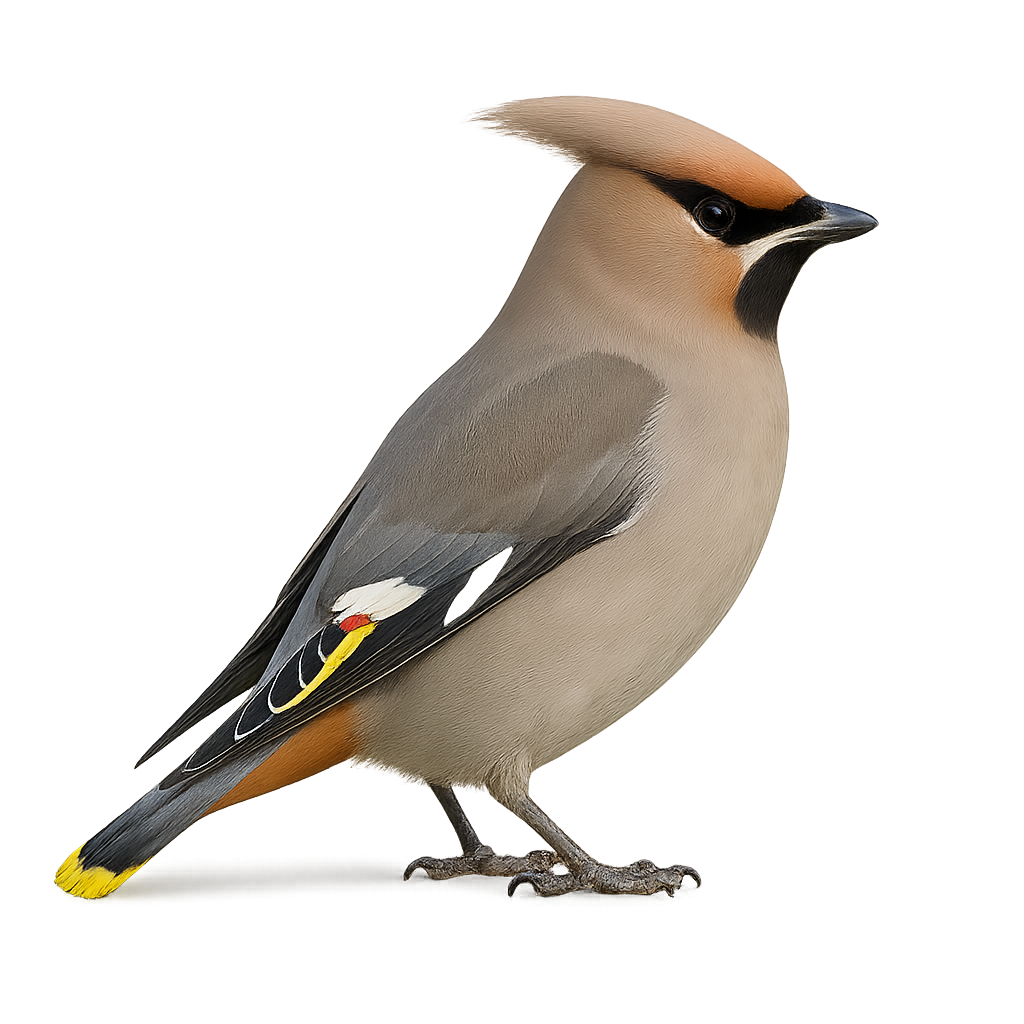Observe and photograph a species in its natural habitat
Learn where and when to observe a species in the wild, how to recognize it in the field, and what habitats it lives in. Get photography tips adapted to its behavior and capture stunning images without disturbing the animal. For full details, open the complete profile in the WildlifePhotographer app.
Bohemian Waxwing
Scientific name: Bombycilla garrulus

IUCN Status: Least Concern
Family: BOMBYCILLIDAE
Group: Birds
Shyness: Suspicious
Safe distance: 20 m
Breeding season / Courtship: 01.05-31.05
Gestation: 13 à 14 jours.
Births: 14.06-14.07
Habitat:
Coniferous forests
Description:
The Bohemian Waxwing is a small colorful bird, easily recognizable by its characteristic crest and the black edges of its feathers. It measures about 20 cm in length, with a wingspan of 30 to 35 cm, and weighs between 50 and 70 g. Its plumage is primarily light gray with bright yellow and red hues on its wings and tail, and it has red and yellow feathers decorating the tips of its plumage. The Bohemian Waxwing primarily inhabits the dense coniferous and deciduous forests of northern Europe and Asia, as well as North America. It is often found in groups, feeding primarily on berries, especially those from juniper and sea buckthorn trees, but it can also eat insects and seeds. This small passerine is also known for its soft call and social behavior, particularly during migration in groups. Although the species is not endangered, it is sensitive to climate change and the availability of its preferred food, berries.
Recommended lens:
>=400 mm
Photography tips:
Use a telephoto lens to photograph from a distance, respecting the discreet nature of the species.
Photograph early in the morning or late in the afternoon, when soft light highlights the Bohemian waxwing's colorful plumage.
Look for it in open wooded areas, such as mature conifer forests, particularly spruces. Outside the breeding season, it also frequents parks, gardens, and hedgerows to feed on available fruits.
Be patient and discreet to avoid disturbing its natural behavior. Avoid sudden movements and keep quiet.
Respect its natural environment and minimize disturbances, especially during the breeding season.
Ready to take action?
Choose your platform and start your free trial today



